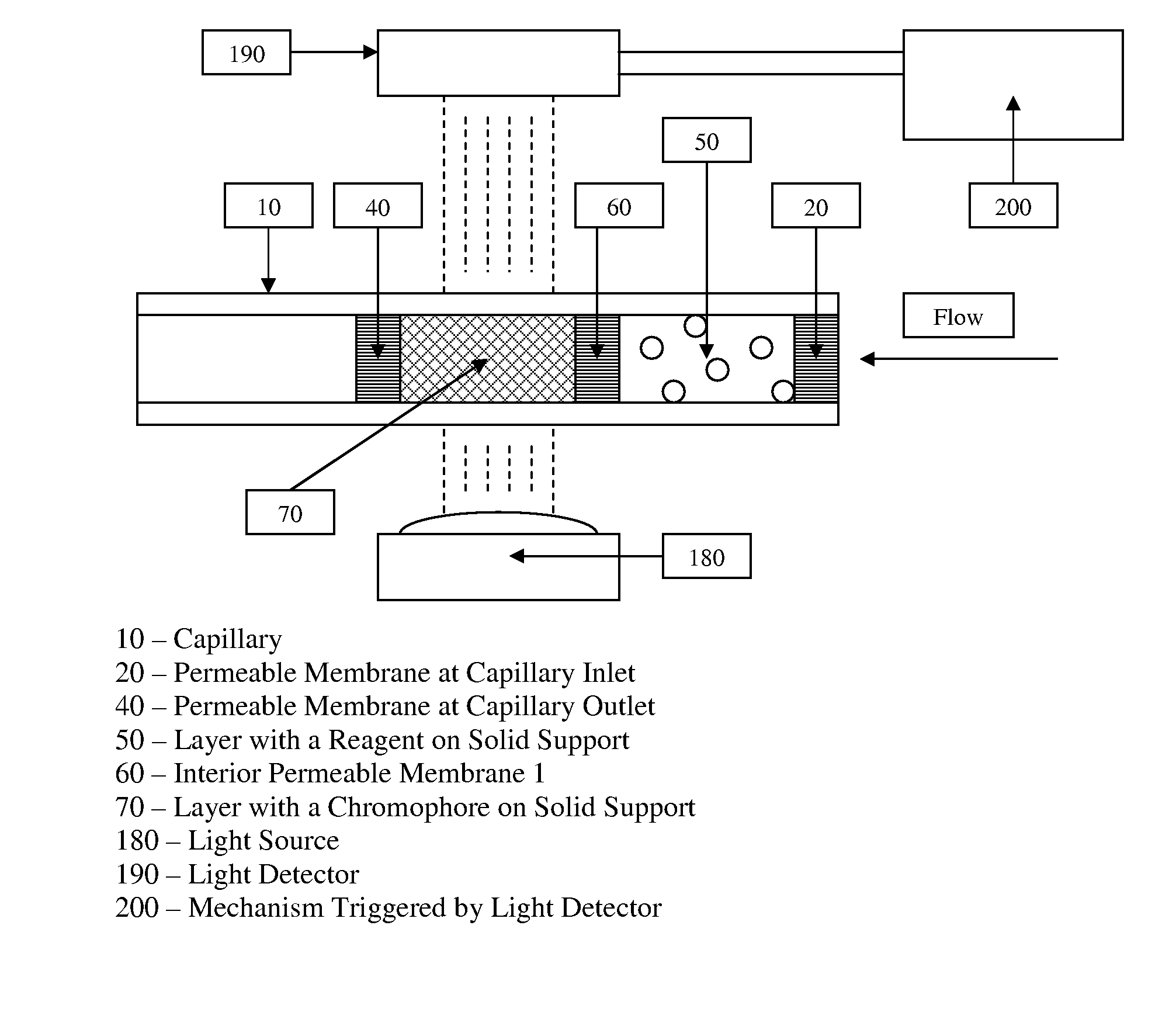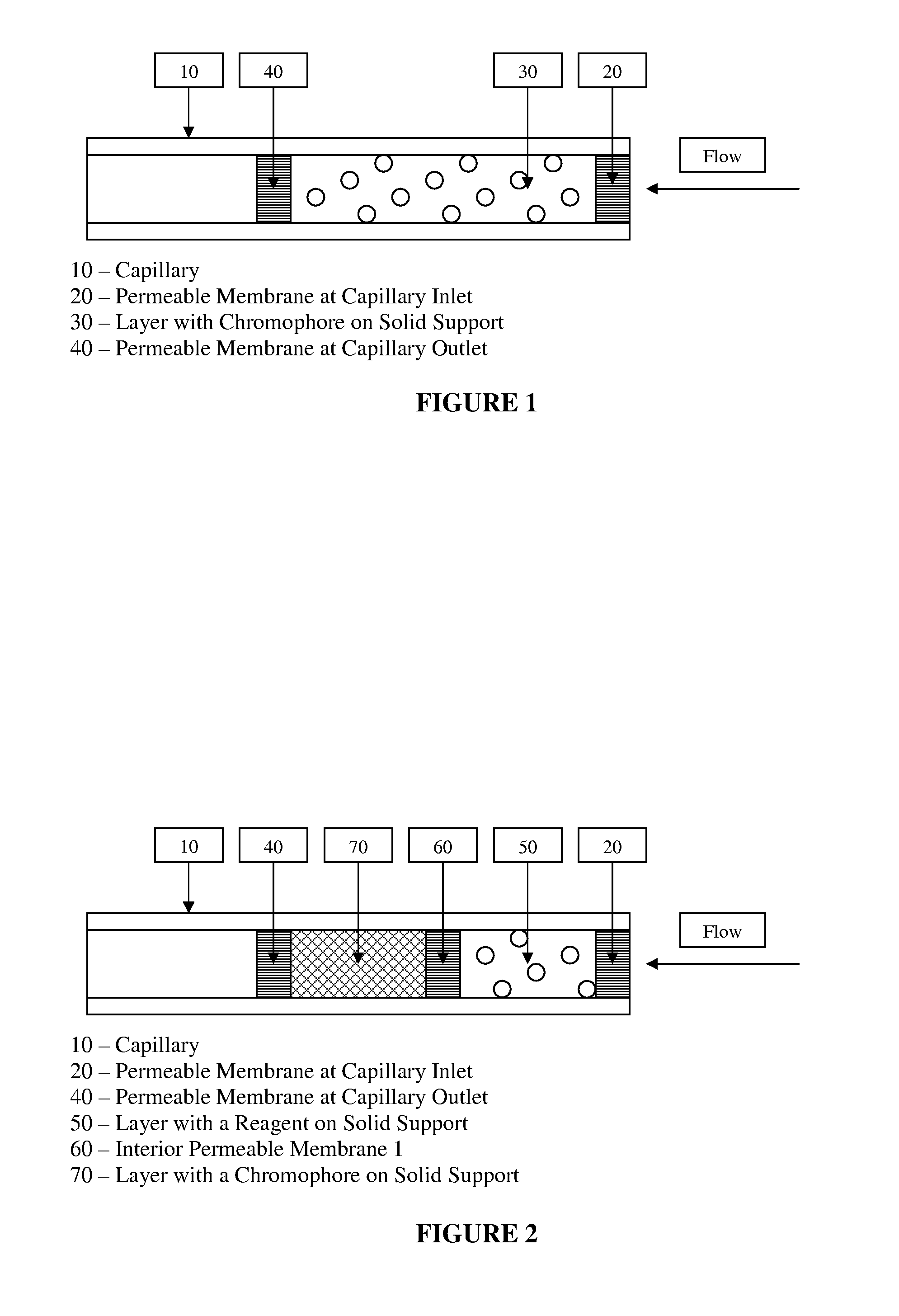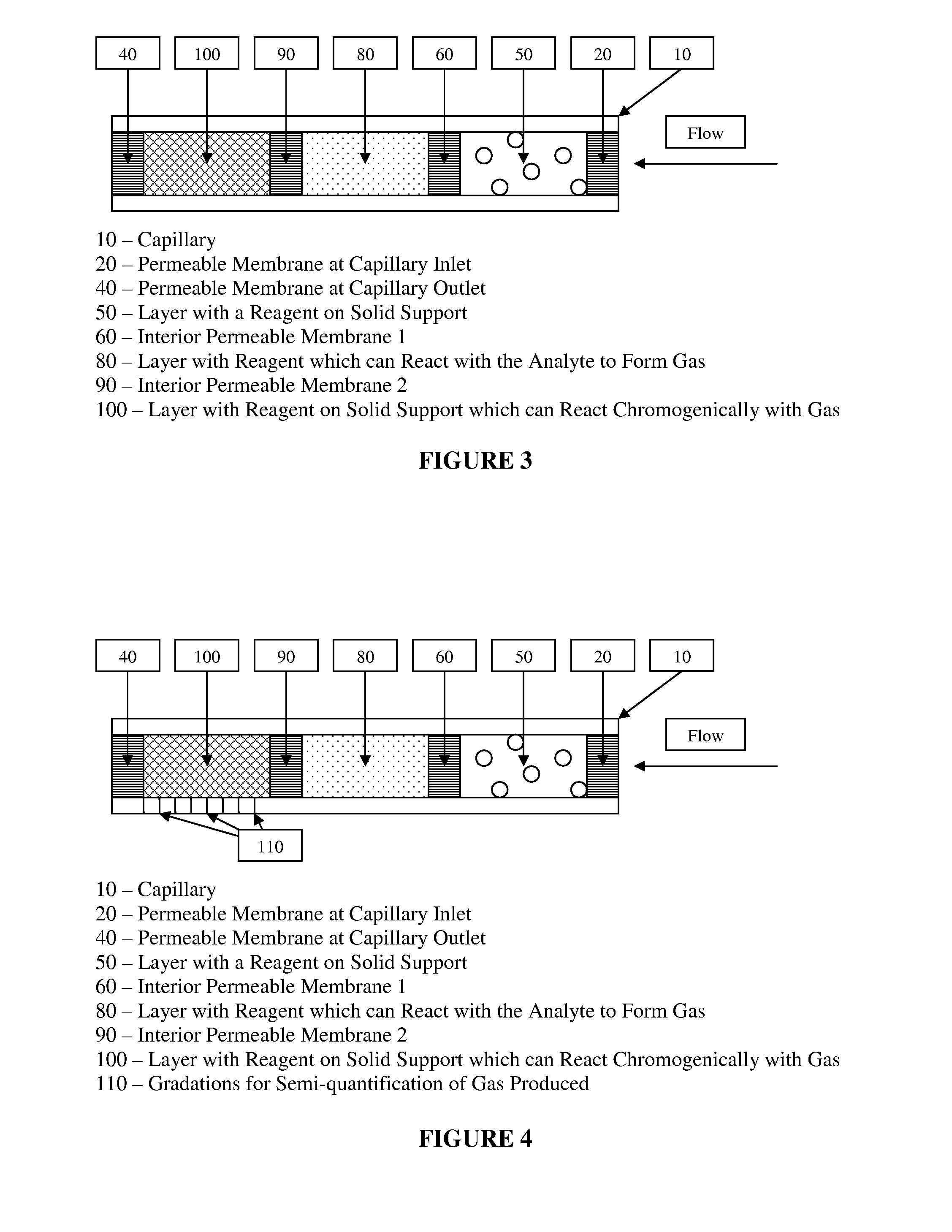Detection of analytes in materials liquids using capillary colorimetric detection
- Summary
- Abstract
- Description
- Claims
- Application Information
AI Technical Summary
Benefits of technology
Problems solved by technology
Method used
Image
Examples
example 1
Azide and Sulfide Detection Capillary
[0084]Chromophore Formulation.
[0085]Dissolve 0.25 grams NH4Fe(SO4)2.12H2O in 5 ml water and add to it 3 grams of silica gel with particle size 63-200μ, nominal BET surface area 300 m2 / gm. Dry the powder at 150° C. for 30 minutes.
[0086]Assembly of Azide Capillary.
[0087]1. Take a capillary 100 mm long and 1 mm ID, 1.5 mm OD.
[0088]2. Push a small piece of cotton approximately ½ inch into a capillary tube.
[0089]3. Fill the capillary to the top with the chromophore.
[0090]4. Compact the particles by tapping the capillary 5 times.
[0091]5. Plug the inlet of the capillary with another small piece of cotton.
[0092]Testing for Azide / Sulfide in Water.
[0093]Submerge the opening of the capillary in the water sample for 1-2 seconds and look on the color. Red color indicates the presence of azides and black color indicates the presence of sulfide. The colors form practically instantly.
example 2
Cyanide and Chromate Detection Capillary
[0094]Chromophore Formulation.
[0095]This detection capillary uses two porous support layers, one carrying an activation agent, denoted Mixture A, and the other a chromophore, denoted Mixture B.
[0096]Mixture A.
[0097]Dissolve 0.1 grams CuSO4 in 5 ml water and add to it 3 grams of silica gel with particle size 63-200μ, nominal BET surface area 300 m2 / gm. Dry the powder at 150° C. for 30 minutes.
[0098]Mixture B.
[0099]Dissolve 5 milligrams tetra methyl benzidine, (TMB), in 5 ml 91% IPA and add to it 3 grams of silica gel with particle size 63-200μ, nominal BET surface area 300 m2 / gm. Dry the powder at 150° C. for 5 minutes.
[0100]Assembly of Cyanide / Chromate Capillary.
[0101]1. Take a capillary 100 mm long and 1 mm ID, 1.5 mm OD.
[0102]2. Push a cotton plug approximately ½ inch into a capillary tube.
[0103]3. Pack ¼ of an inch of the open volume with Mixture B.
[0104]4. Insert a second cotton plug on top of the silica gel
[0105]5. Fill the capillary to t...
example 3
Peroxides Detection Capillary
[0110]Chromophore Formulation.
[0111]This detection capillary uses two porous support layers, one carrying an activation agent, denoted Mixture A, and the other a chromophore, denoted Mixture B.
[0112]Mixture A.
[0113]Dissolve 1 gram Na2CO3 in 5 ml water and add to it 3 grams of silica gel with particle size 63-200μ, nominal BET surface area 300 m2 / gm. Dry the powder at 150° C. for 30 minutes.
[0114]Mixture B.
[0115]Dissolve 0.2 grams manganese sulfate in 5 ml water and add to it 3 grams of silica gel with particle size 63-200μ, nominal BET surface area 300 m2 / gm. Dry the powder at 150° C. for 30 minutes.
[0116]Assembly of the Peroxides Detection Capillary.
[0117]1. Take a capillary 100 mm long and 1 mm ID, 1.5 mm OD.
[0118]2. Push a cotton plug approximately ½ inch into a capillary tube.
[0119]8. Pack ¼ of an inch of the open volume with Mixture B.
[0120]9. Insert a second cotton plug on top of the silica gel
[0121]10. Fill the capillary to the top with Mixture A....
PUM
 Login to View More
Login to View More Abstract
Description
Claims
Application Information
 Login to View More
Login to View More - R&D
- Intellectual Property
- Life Sciences
- Materials
- Tech Scout
- Unparalleled Data Quality
- Higher Quality Content
- 60% Fewer Hallucinations
Browse by: Latest US Patents, China's latest patents, Technical Efficacy Thesaurus, Application Domain, Technology Topic, Popular Technical Reports.
© 2025 PatSnap. All rights reserved.Legal|Privacy policy|Modern Slavery Act Transparency Statement|Sitemap|About US| Contact US: help@patsnap.com



